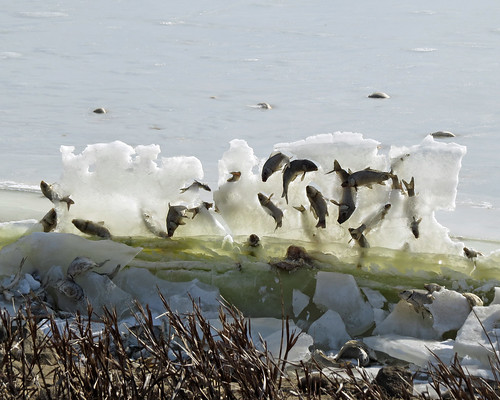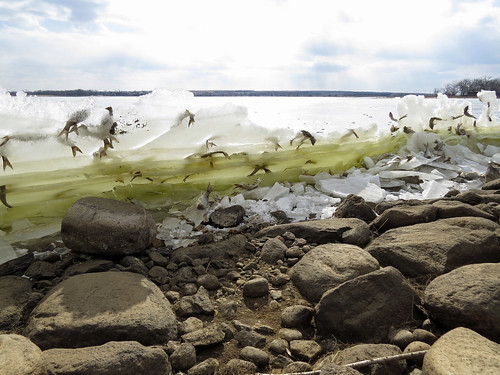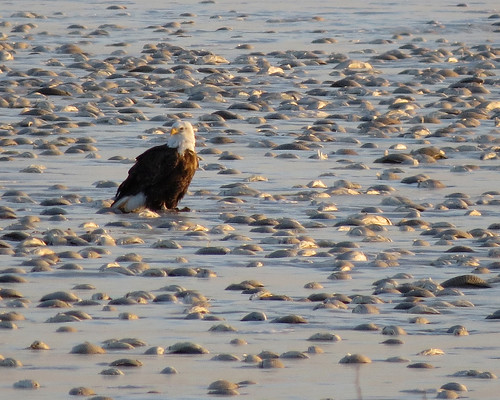 |
| Photo copyright 2015 by Kelly Preheim |
Here at the western end of the big lake, we can usually still see a big patch of open water, though that moves from day to day. The ice piles up on the South Shore when winds have a northern component, and on our side of the lake when winds are southerly, so our hopes of spring, pinned to that blue water, can be raised or dashed depending on which way the wind is blowing. Hamlet must have lived on the South Shore to be but mad north-northwest.
As the ice sheets slosh back and forth, colliding with the shore and other ice sheets, dead fish and other small aquatic critters at the surface end up getting embedded in the ice. By March and April, we see increasing numbers of crows, ravens, and eagles walking on the ice. When people ask me what they’re looking for, I explain about these frozen dinners, but I’ve never had a good photo of what’s happening, until I heard from Kelly Preheim, a kindergarten teacher and birder from South Dakota.
On February 28, Kelly wrote in her wonderful BirdTeach blog:
The lake at Lake Andes National Wildlife Refuge had a fish kill last year and in mid-March there were hundreds of Bald Eagles, American Crows and gulls at the lake in a feeding frenzy! It was quite loud amongst the flurry of wings and I was amazed at what I saw! This year is proving to be a repeat year. Today there were deceased fish scattered all along the surface with some fish in these vertical ice jams.
 |
| Photo copyright 2015 by Kelly Preheim |
 |
| Photo copyright 2015 by Kelly Preheim |
 |
| Photo copyright 2015 by Kelly Preheim |
Up here in the north, ice sometimes remain in Lake Superior until May and some pockets close to the lake may not have much leaf out before June, so signs of spring can be subtle and easy to miss. Even our fish kills are apparently not as dramatic as they are in other places. Watching crows and eagles combing the decaying ice surface for bits of dead aquatic animals may not appeal to some people, but I’ll take the season as it comes.
You can learn more about Kelly Preheim's adventures with her students at Kelly's delightful Kindergarteners on the Go! blog. And check out the Destination Nature facebook page and Kelly's flickr photostream:
https://www.facebook.com/